
Microorganisms in action!
- Subject:
- Biology
- Life Science
- Material Type:
- Activity/Lab
- Assessment
- Game
- Lesson Plan
- Provider:
- Arizona State University
- Provider Set:
- Ask A Biologist
- Author:
- Dr. Biology
- Date Added:
- 06/10/2009
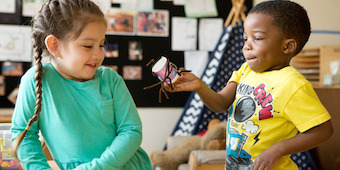

Microorganisms in action!
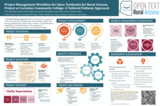
The Comprehensive OER Toolkit has been thoughtfully designed to empower educators and managers with the essential tools and guidance needed to effectively initiate, implement, and manage Open Educational Resources (OER) projects within their educational institutions. These resources have been carefully curated to facilitate a seamless workflow and streamline the processes associated with OER adoption.By offering this diverse array of resources, the Comprehensive OER Toolkit aims to equip educators and managers with a comprehensive suite of materials and templates to effectively manage the entire lifecycle of OER projects, from their inception to evaluation. Whether you are a novice or an experienced OER advocate, these resources can be customized and adapted to meet the specific needs of your institution, ultimately fostering a culture of open education and enhancing access to quality learning materials for all students.
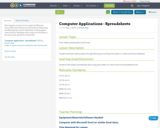
This template is meant to be a guide for Nebraska Career Education Teachers in the Business, Marketing, and Management Career Field when creating digital online lessons. Headings and/or topics not included in the lesson plan should be marked N/A.
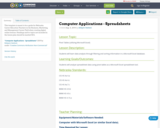
This template is meant to be a guide for Nebraska Career Education Teachers in the Business, Marketing, and Management Career Field when creating digital online lessons. Headings and/or topics not included in the lesson plan should be marked N/A.

This resource contains several ready made curricula for lower primary students. The resources are easy to use and contain all of the information a teacher would need to teach the lessons/units.

Discover your home away from home, and get the inside scoop on Conejo Valley Eventswhat you can see, do, savor and sip in the Conejo Valley. The Conejo Valley offers all of the fun yet none of the crowding of nearby destinations. Enjoy the best of our unique local venues and driveable daytrips. The Conejo Valley offers all of the fun yet none of the crowding of nearby destinations. Enjoy the best of our unique local venues and driveable daytrips.

Article for the Serving Children with Special Needs workshop in Spanish

Conscious Discipline is a way to help small children become aware of their actions and how they affect others, whether it is in a positive or negative way. I have seen first hand that when children grow up in an environement with it, they become people who have more empathy and kindness towards others. They feel good about who they are because they know that they have always been safe and loved.

Children love to sing! Constellation Song is easy to sing, and scientifically accurate!
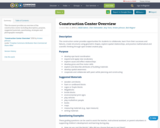
This document provides an overview of the construction center including description, purpose, suggested materials, questioning, strategies and photographic examples.

Graphic organizer to help identify Next Generation Science Standards performance expectations, three dimensions, and additional content connections in instructional materials.
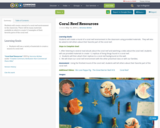
Students will create a mural of a coral reef environment in the classroom. There will be many materials available in which to create 1-2 examples of their favorite parts of the coral reef.
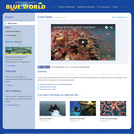
In this video, Jonathan examines the biology of coral reefs and their importance to the marine ecosystem. Please see the accompanying lesson plan that discusses pH and ocean acidification for educational objectives, discussion points and classroom activities.
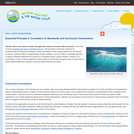
The concepts that underlie the fourth essential principle of climate literacy ("Climate varies over space and time through both natural and man-made processes.") are too complex for students in early and upper-level elementary school, but the foundational knowledge can be taught within existing curriculums and standards. This foundational knowledge will lead to understanding in later years. The author shows the correlation to the national science education standards, identifies misconceptions among elementary school students, suggests formative assessment probes, and identifies lessons and activities to make curriculum connections. The free, online magazine Beyond Weather and the Water Cycle is based on the seven essential principles of the climate sciences.
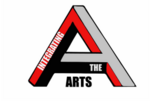
This resource was created by Cheyanne Jessen, in collaboration with Dawn DeTurk, Hannah Blomstedt, and Julie Albrecht, as part of ESU2's Integrating the Arts project. This project is a four year initiative focused on integrating arts into the core curriculum through teacher education, practice, and coaching.

Sentence segmentation, or counting words in a sentence, is the first step in phonological awareness. Students need to have an understanding that words are made up of letters and sentences are made up of words. This basic skill will help them later with both reading and writing.Objective: I can break and count words in a sentence.Time required: 20 minutes or lesson can be chunked into managable size bits for your students.

This Course Review and Approval Tool (CRAT) is the “workbook” that faculty use to design and plan their course with best practice in mind that addresses: curricular alignment with objectives, learning activities, practice assignments and quizzes, and higher-stakes assessments. The 10-tabbed spreadsheet is a digital multitool that centralizes and aggregates the entire course development, review, and approval processes. This tool is used to plan the course prior to its build in the Learning Management System (LMS) as part of an eight-module LMS-based support course that steps faculty through the process and gives them a learner-based perspective on how the tools work together and the features available to them for use in their own courses.
In addition to facilitating communication with multiple stakeholders who may share the document, the process MODELS a self- and peer-reviewed authentic assessment strategy that adapts itself well to any curriculum, whether for training, orientation, or credit-bearing coursework. It supports and models features of an intersection of agile design, backward design, and reflective practice in addition to encouraging authentic and formative assessment strategies. Providing all necessary documents in one easily accessed and bookmarkable document facilitates the process of course development by providing both a model and a touchstone for faculty who are often overwhelmed with the complexity of the process of developing or redeveloping courses regardless of delivery modality. While most of our faculty came to the program because of requirements for online or hybrid learning, most have exclaimed happily that they now apply this process to all of their courses and their learners have shown appreciation for the clarity and consistency that the tool promotes and supports.
The document also includes a dynamic link to future updates for anyone who adopts it and wants to follow its evolution. Feel free to adapt!
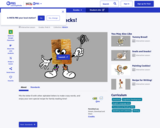
Mix the letter B with other alphabet letters to make crazy words, and enjoy your own special recipe for family reading time!
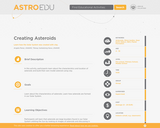
In this activity, students familiarise themselves with asteroids. They discuss and build their own model asteroids. They learn how asteroids are formed in the Solar System. At the end of the activity, each student has their own model asteroid made from clay.

Children make craters by dropping balls into a tub of flour.